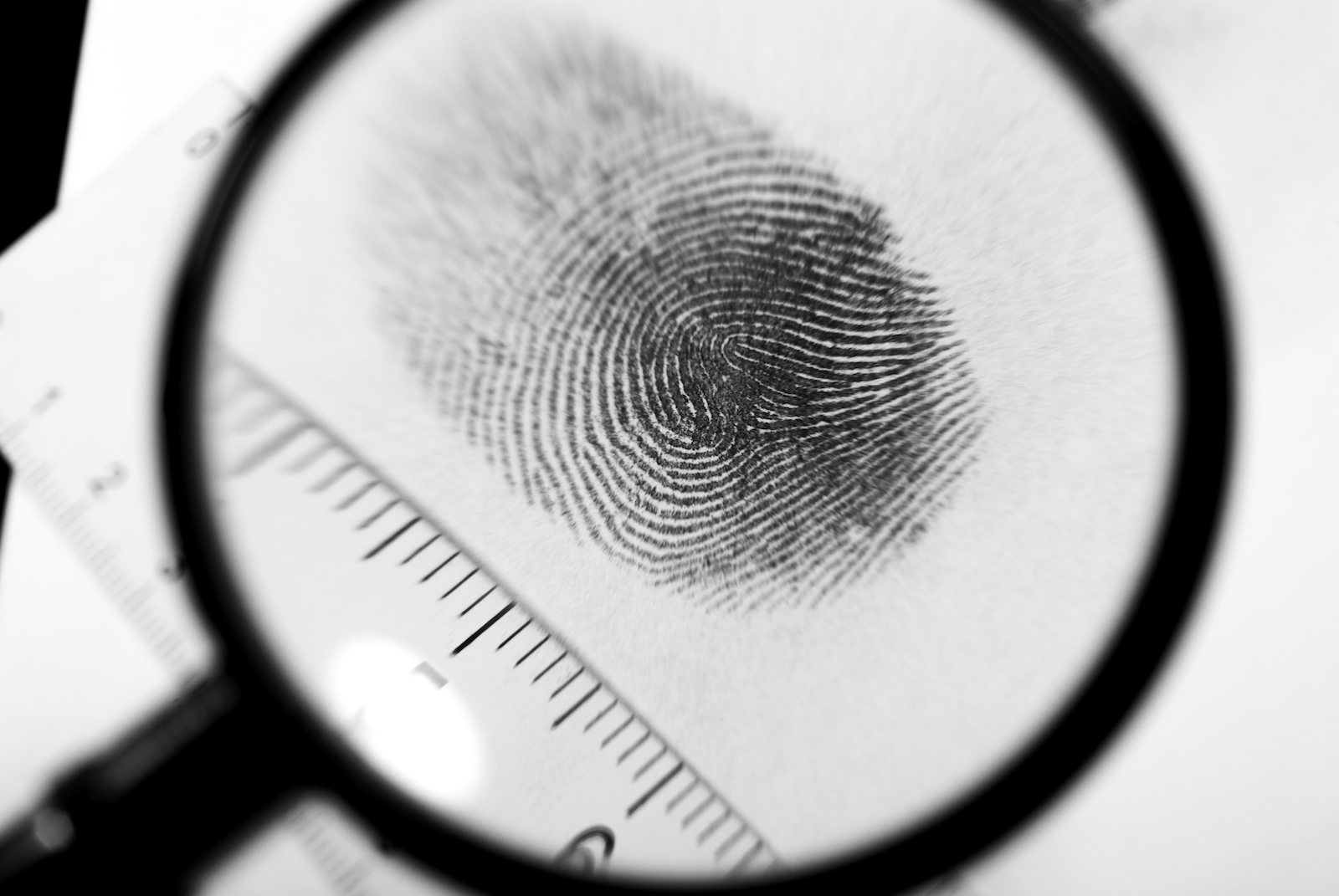
Why Do We Have Fingerprints?

In 1910, Thomas Jennings fled a murder scene, but he left behind a clue that would seal his fate: a perfect impression of his fingerprints in the drying paint of a railing, outside the house where he'd committed the crime. Jennings' fingerprints were the first ever to be used as evidence in a criminal investigation, and they led to his conviction for murder in 1911.
Since then, fingerprints have continued to feature as crucial evidence in forensic investigations. These unique identity markers are so ideally suited to the task of busting a crime, that it's almost as if that's why they exist.
But of course, this isn't the case. Which brings us to the question: Why do we have fingerprints, and what biological purpose do they serve?
Related: 10 Things You Didn’t Know About You
Fingers and friction
It turns out, scientists have historically disagreed on the answer.
"People have had two ideas about fingerprints: that they help improve grip, and that they help improve touch perception," said Roland Ennos, a biomechanics researcher and visiting professor of biology at the University of Hull in the United Kingdom.
Ennos has spent part of his career investigating the first idea — that fingerprints give us grip. For a long time, this has been the guiding theory, that fingerprints' miniscule troughs and peaks create friction between our hands and the surfaces we touch.
Sign up for the Live Science daily newsletter now
Get the world’s most fascinating discoveries delivered straight to your inbox.
One piece of evidence to support this theory is that fingertips might work like the rubber tires on cars, whose pliable nature allows them to conform to the surface they're traveling across. In tires, this pliability is paired with trough-like treads that decorate their surface — and this enlarges the tire's surface area, therefore increasing friction and traction, too. Ennos wanted to investigate how well this idea would hold up in a laboratory experiment.
"We wanted to see if finger friction goes up with the contact area like it does in tires," Ennos told Live Science. To find out, the researchers dragged a perspex plate across a person's finger pads, varying the force over different attempts and using fingerprint ink to determine how much of the flesh area was touching the glass.
Surprisingly, these experiments revealed that "the actual area of contact was reduced by the fingerprints, because the valleys didn't make contact," Ennos told Live Science. In other words, compared with the smooth skin that covers the rest of the body, "fingerprints should reduce friction, at least on smooth surfaces."
This doesn't completely debunk the idea that fingerprints aid grip, said Ennos. It's thought that fingerprints might help us grip surfaces in wet conditions, for instance — the channels wicking away water much like the treads on car tires do — to stop our hands from slipping across a surface. Yet, this idea is harder to test because it's difficult to perfectly mimic the behaviour of human fingerprints under these conditions, Ennos said.
But there is the other theory, which might hold more water: the role of fingerprints in aiding touch.
Masterful touch
A few years ago, Georges Debrégeas, a physicist-turned-biologist at Sorbonne University in Paris, was pondering the lack of a conclusive theory on why we have fingerprints, when he became curious about the potential role of touch. Our fingers contain four types of mechanoreceptors, or cells that respond to mechanical stimulation like touch. Debrégeas was especially curious about one particular type of mechanoreceptor — Pacinian corpuscles — which occur about 0.08 inches (2 millimeters) below the surface of the skin in fingertips. "I was interested in Pacinian corpuscles because we knew, from previous experiments, that these specific receptors mediate the perception of fine texture," Debrégeas told Live Science.
These mechanoreceptors are particularly sensitive to tiny vibrations of a precise frequency — 200 hertz — and thus help to give our fingertips their extreme sensitivity. Debrégeas wondered whether fingerprints enhanced this sensitivity.
To find out, he and his colleagues designed a biomimetic tactile sensor, a contraption that resembles the structure of a human finger,, with sensors that would detect vibrations similarly to the way that Pacinian corpuscles do. One version of this device was smooth, and another had a ridged pattern on the surface that mimicked a human fingerprint. When moved over a surface, the ridged one yielded a fascinating discovery: the ridges on the sensor amplified the exact frequency of vibrations that Pacinian corpuscles are so sensitive to.
Acting as a proxy for human fingertips, the contraption suggested that our fingerprints would similarly channel these precise vibrations to sensors beneath the skin. . By amplifying this fine and detailed sensory information, the theory is that fingerprints therefore increase our tactile sensitivity severalfold. "The fact that you put fingerprints on the skin completely changes the nature of the signals," Debrégeas said.
But what's the benefit of having such hypersensitive fingertips?
For millennia, our hands have been crucial tools for finding and eating food, and helping us navigate the world. Those tasks are mediated by touch. Sensitivity to textures, in particular, might be evolutionarily beneficial because it has helped us detect the right kind of food: “The reason why we need to detect and separate textures is that we want to separate the good food from the bad food,” Debrégeas explained. A fine sense of touch might help us to avoid rotting or infected items.
Adding weight to the idea, Debregéas noted that the pairing of fingerprints and Pacinian corpuscles also exists in other animals like chimpanzees and koalas, which partially rely on tactile sensitivity to help them find their food.
Debregéas emphasised, however, that his experiment isn't proof that fingerprints evolved for this purpose. But it's a compelling and elegant thesis, nevertheless. "It seems like everything matches," he said.
Loose ends and new questions
Even so, Debrégeas actually thinks that fingerprints might serve the goals of both touch and grip. “The reason we are so good at manipulating and handling things is because we have this exquisite sense of touch - a constant feedback loop between what we touch and what we feel,” he explained. That “allows us to correct in real time the force with which we’re going to grip the object.”
For instance, if something slips while you’re holding it, you need to be able to detect the change in its surface with sensitive fingertips, in order to maintain your grip. So Debrégeas thinks it’s possible that our fine sense of touch and precise grip actually co-evolved
Ennos ponders yet another possible explanation: Fingerprints might prevent blisters, he believes. "A final idea I favor is that the ridges reinforce skin in some directions and help it resist blistering, while still allowing it to stretch at right angles, so the skin maintains contact," he said. "This is a bit like the reinforcements in tires."
To Ennos, these many possibilities intrigue him.
So, where does this leave us? It seems that despite offering irrefutable forensic evidence to detectives and police, for now, our fingerprints remain something of an enigma.
- Do Identical Twins Have Identical Fingerprints?
- Why Do We Hiccup?
- Why Do Smells Trigger Strong Memories?
Originally published on Live Science.

Emma Bryce is a London-based freelance journalist who writes primarily about the environment, conservation and climate change. She has written for The Guardian, Wired Magazine, TED Ed, Anthropocene, China Dialogue, and Yale e360 among others, and has masters degree in science, health, and environmental reporting from New York University. Emma has been awarded reporting grants from the European Journalism Centre, and in 2016 received an International Reporting Project fellowship to attend the COP22 climate conference in Morocco.










